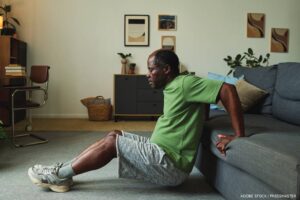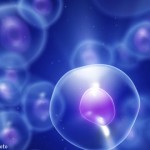 Exercise is something of a dichotomy: It has proven benefits in preventing and mitigating a wide range of chronic diseases, yet it can also induce acute inflammation. Exercise, for example, can simultaneously induce production of interleukin (IL) 6, a pro-inflammatory cytokine, and the very anti-inflammatory IL-10 cytokine. “It’s really the balance of the two that we believe is important for the overall interpretation in the immune system, how they sense these signals and decide what to do,” says Kameron Rodrigues, PhD, a post-doctoral researcher in the Division of Immunology and Rheumatology, Department of Medicine, Stanford Medicine, Palo Alto, Calif.
Exercise is something of a dichotomy: It has proven benefits in preventing and mitigating a wide range of chronic diseases, yet it can also induce acute inflammation. Exercise, for example, can simultaneously induce production of interleukin (IL) 6, a pro-inflammatory cytokine, and the very anti-inflammatory IL-10 cytokine. “It’s really the balance of the two that we believe is important for the overall interpretation in the immune system, how they sense these signals and decide what to do,” says Kameron Rodrigues, PhD, a post-doctoral researcher in the Division of Immunology and Rheumatology, Department of Medicine, Stanford Medicine, Palo Alto, Calif.
Inflammation can be triggered by the presence of cell-free DNA, and research has found that pregnancy, cancer, autoimmune diseases, viral infections and exercise all induce the release of cell-free DNA into the body’s circulation.1 For the immune system’s neutrophils, macrophages and dendritic cells, DNA release can occur via an unusual phenomenon known as ETosis. During this kind of rapid cell death, a cell ejects its DNA and antimicrobial enzymes, in the form of sticky, net-like structures, to trap and neutralize perceived threats, such as microbes.
“ETosis is a way for cells to be like superheroes, almost like Spider-Man; they release these nets, and they capture their enemies,” Dr. Rodrigues says. Unlike superheroes, however, for cells the process is self-sacrificing because the immune cells cannot live long without their DNA.
In neutrophils, the immune system’s already short-lived first responders, ETosis primarily serves to trap and neutralize pathogens, such as bacteria and fungi. The process is less common in macrophages and dendritic cells, although it can play an auxiliary role in pathogen defense, along with the cells’ more dominant functions of phagocytosis and antigen presentation. How exercise may trigger the ETosis mechanism isn’t yet clear, although studies have considered shear stress, temperature change, oxygen levels and heart rate among the contributing factors.
A recent study by Dr. Rodrigues and colleagues in the Proceedings of the National Academy of Sciences sought to clarify which cell types are ejecting cell-free DNA during bouts of exercise and how that release modifies the immune system’s response to exercise.2 The initial results, albeit from a small sample size, found that high-intensity workouts may actually reduce the release of cell-free DNA and tamp down inflammation over time. If the evidence bears out in a larger study, Dr. Rodrigues says, one potential implication is that regular aerobic activity could have protective benefits against autoimmune and other inflammatory conditions.


